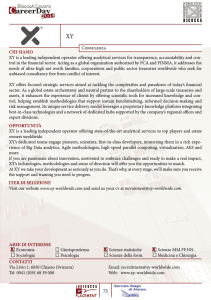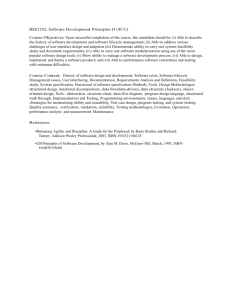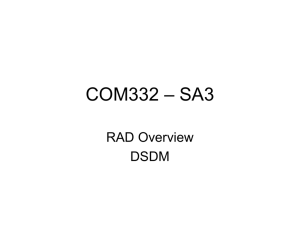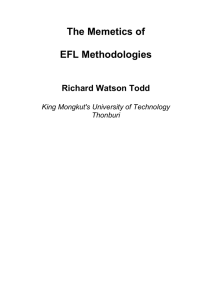Classifying and comparing methodologies
advertisement
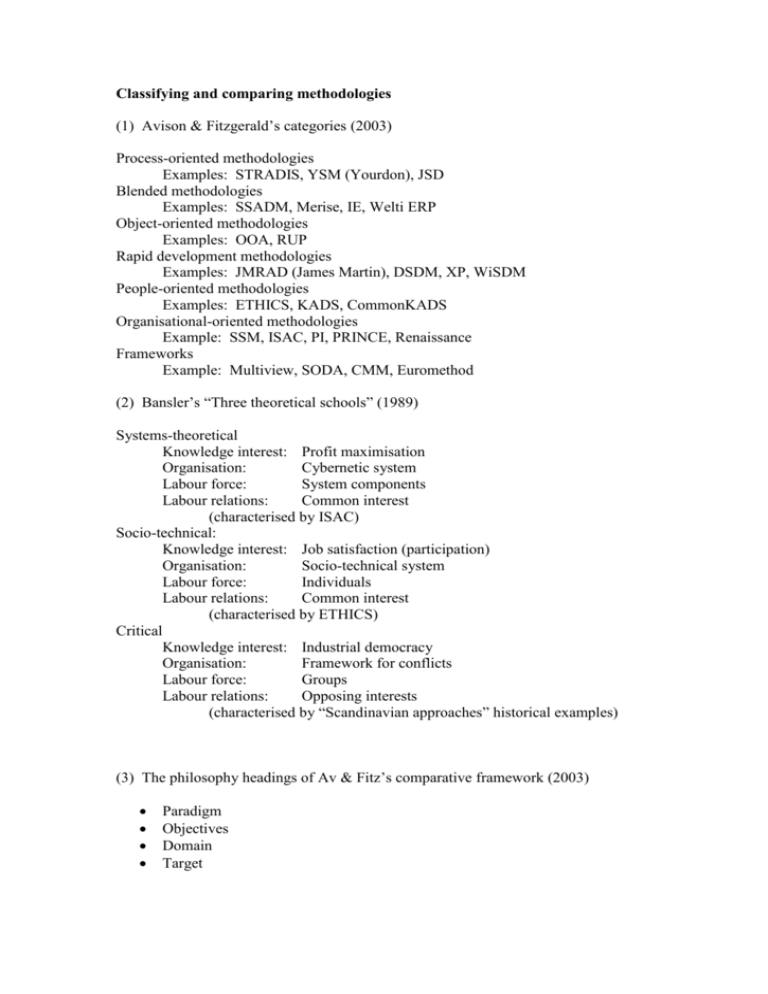
Classifying and comparing methodologies (1) Avison & Fitzgerald’s categories (2003) Process-oriented methodologies Examples: STRADIS, YSM (Yourdon), JSD Blended methodologies Examples: SSADM, Merise, IE, Welti ERP Object-oriented methodologies Examples: OOA, RUP Rapid development methodologies Examples: JMRAD (James Martin), DSDM, XP, WiSDM People-oriented methodologies Examples: ETHICS, KADS, CommonKADS Organisational-oriented methodologies Example: SSM, ISAC, PI, PRINCE, Renaissance Frameworks Example: Multiview, SODA, CMM, Euromethod (2) Bansler’s “Three theoretical schools” (1989) Systems-theoretical Knowledge interest: Profit maximisation Organisation: Cybernetic system Labour force: System components Labour relations: Common interest (characterised by ISAC) Socio-technical: Knowledge interest: Job satisfaction (participation) Organisation: Socio-technical system Labour force: Individuals Labour relations: Common interest (characterised by ETHICS) Critical Knowledge interest: Industrial democracy Organisation: Framework for conflicts Labour force: Groups Labour relations: Opposing interests (characterised by “Scandinavian approaches” historical examples) (3) The philosophy headings of Av & Fitz’s comparative framework (2003) Paradigm Objectives Domain Target Paradigm = a pattern against which other things may be compared (can you think of examples which have nothing to do with computers?) Objective = a stated aim which you define before you start a task; when you complete the task, you can measure your success against the objective Domain = the area in which you operate Target = what you are aiming to hit. (4) Jayaratna’s comparative framework (NIMSAD) (1994) the problem situation or methodology context the intended problem-solver or methodology user the problem-solving process (the methodology itself) (1) the problem situation because - effectiveness of systems measured against contribution to information users in org - developers need to interact with members of org - this is the area where methodology users are introduced to the problem as seen by the client - and where interpersonal relationships are formed. (2) intended problem–solver why does the ips select some elements of action world as relevant/significant/useful, regard others as irrelevant/insignificant/useless? how do they select or abstract elements of the action world? what are the implications of this selection? Mental construct: Perceptual process - what is significant? Values – beliefs we hold to be good, without question Ethics – standards we place on others’ behaviours Motives – private needs we try to satisfy in a situation Prejudices – persistent opinions that we form from our values Experiences Reasoning ability (linked to Experiences) Knowledge and skills – acquired from education, training and experience Structuring processes – how an individual thinks and acts Rôles – explicit behavioural tasks that can be attributed to someone responsible for performing a set of tasks Mental models and frameworks (3) the problem-solving process Phase 1 Stage 1 Stage 2 Stage 3 Problem formulation understanding the situation of concern performing the diagnosis (where are we now?) defining the prognosis outline (where do we want to be and why?) Stage 4 Stage 5 Phase 2 Stage 6 Stage 7 Phase 3 Stage 8 defining problems deriving notional systems Solution design performing conceptual/logical design performing physical design Design implementation implementing the designs








